Content
Graphical Method of 1D Motion
Geometrical Representation of 1D Motion
Derivative of a Function
Integral of a Function
Graphical Method of 1D Motion
From the fundamental kinematic equations, the motion of an object is described with respect to time. These functions can therefore be represented by plotting ordered pairs in the Cartesian plane graphically.
Geometrical Representation of 1D Motion
Through the graphical method, the geometrical meaning of 1D motion can be visualized.
Derivative of a Function
Motion as the derivative of a function. That is
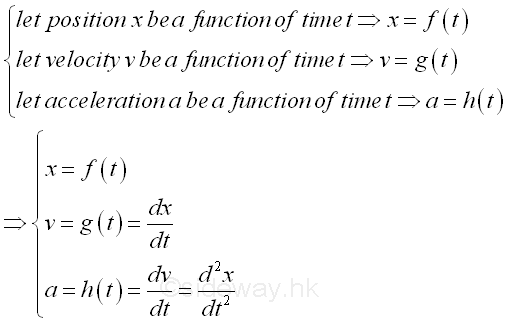
A position function x is a funtcion time t. For example, x=t+t2+t3 and the slope at t, dx/dt is equal to the velocity v at t
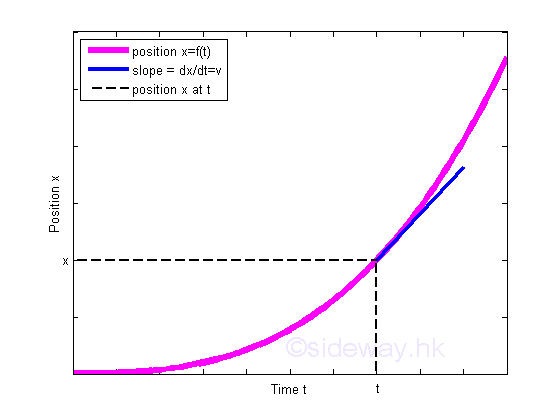
By definition, a velocity function v is the derivative of the position function with respect time t. Imply v=dx/dt=1+2t+3t2 and the slope at t, dv/dt is equal to the acceleration a at t.
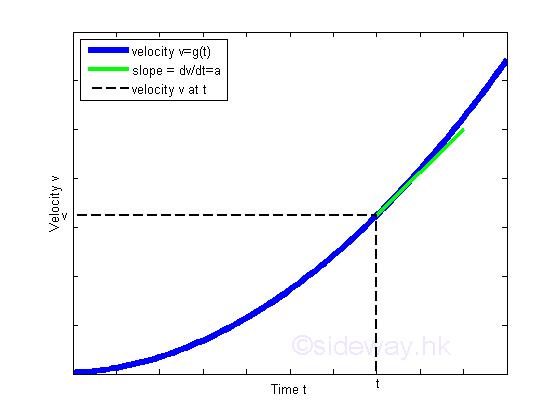
By definition, an acceleration function a is the derivative of the velocity function with respect time t. Imply a=dv/dt=2+6t .
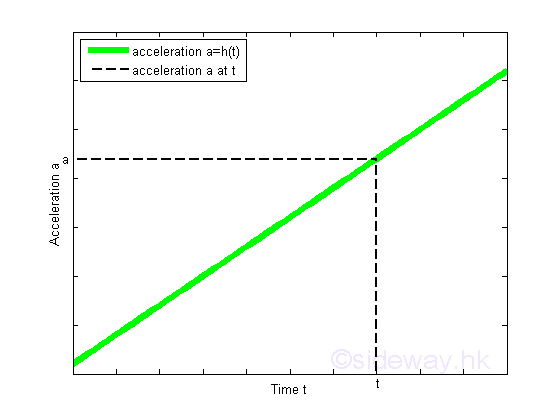
When motion functions can be expressed in term of position x, an acceleration function a is the product of the velocity function and the derivative of the velocity function with respect position x.
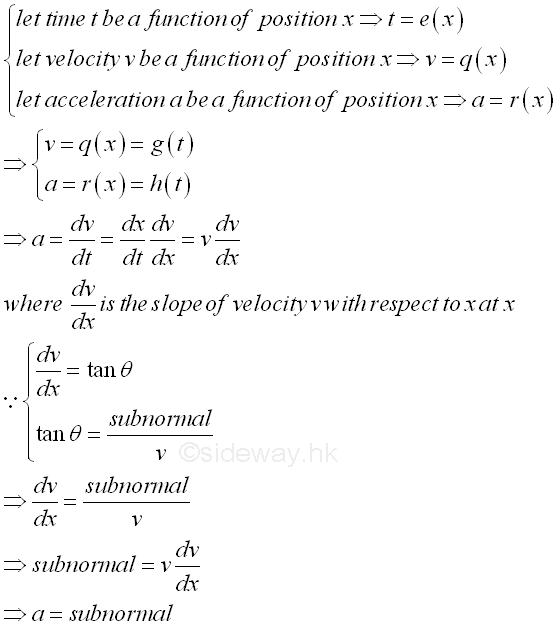
For example, v=1+2x+3x2/40. Imply a=vdv/dx=(1+2x+3x2)(2+6x)/1600. Using the same scale of magnitude, the acceration a at x can be directly obtained by constructing the normal to the tangent line at x and the accelertation at x is then equal to the x-intercept or the subnormal accordingly.
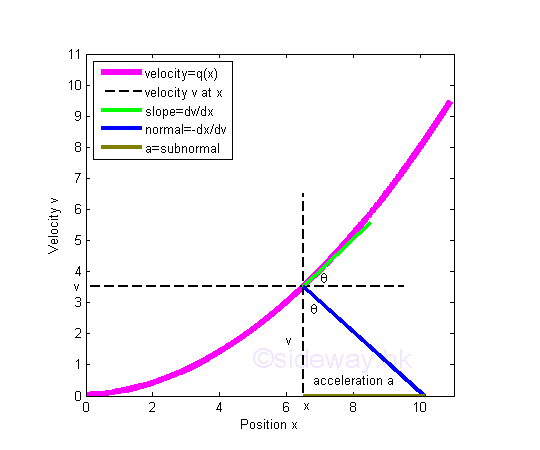
Integral of a Function
Motion as the integral of a function. That is
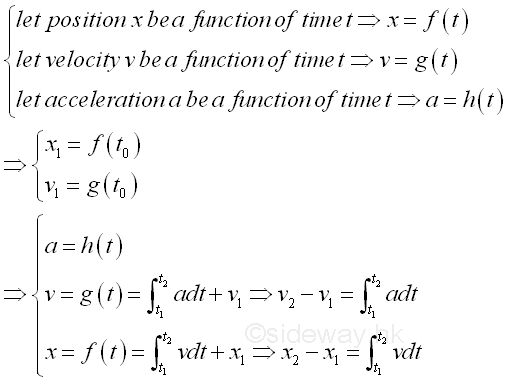
By definition, a velocity function v is the integral of the acceleration function with respect time t. Imply v2-v1=∫t2 t1 adt.
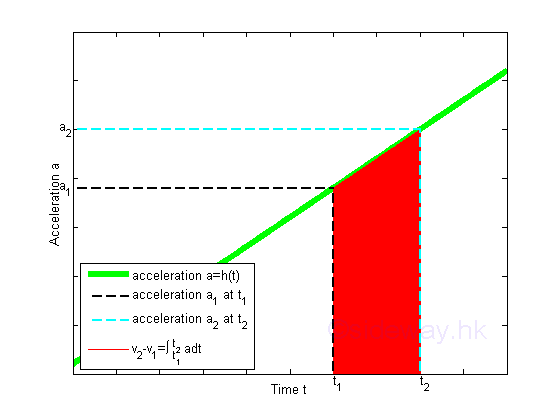
By definition, a position function x is the integral of the velocity function with respect time t where v2-v1=∫t2 t1 adt. Imply x2-x1=∫t2 t1 vdt.
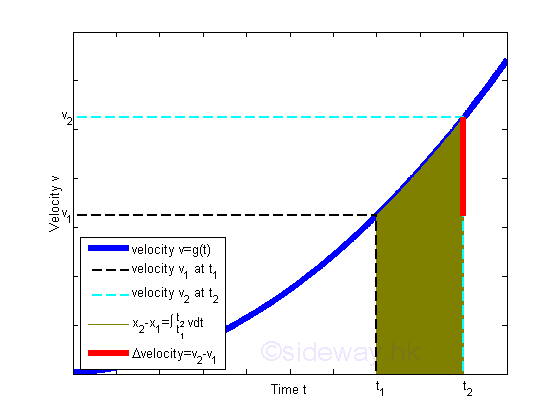
A position function x is a function of time t where x2-x1=∫t2 t1 vdt.
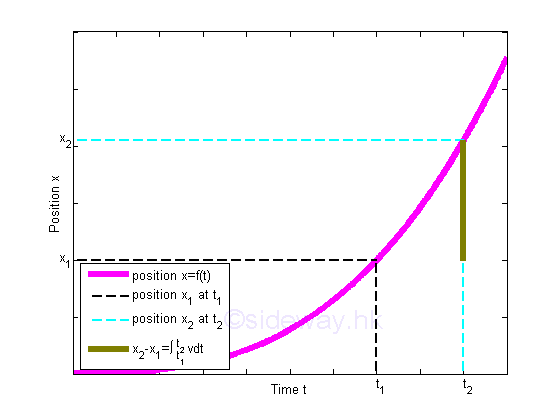
When motion functions can be expressed in term of velocity v, through transformation of areas, the difference between two positions can be expressed in another form.
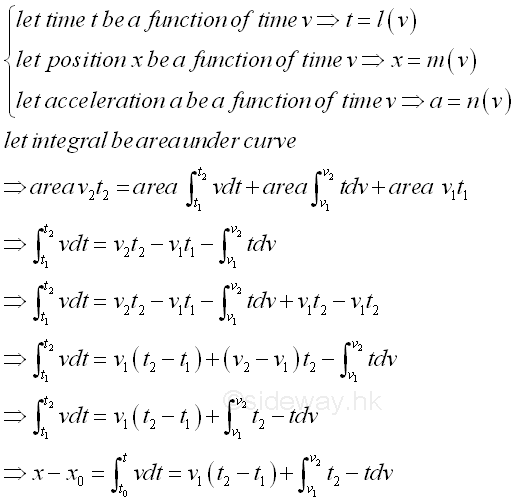
Imply.
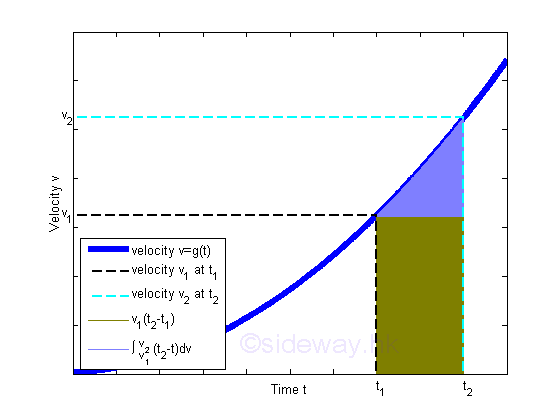
Through subsitution, the difference between two positions can also be expressed in another form associated with the acceleration function. By making use of the concept of moment-area method, the difference between two positions cab be easily obtained from acceleration with simple bounded areas.
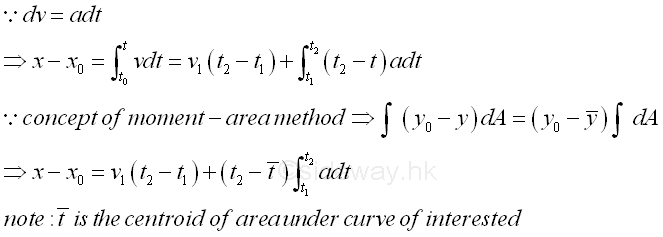
Imply
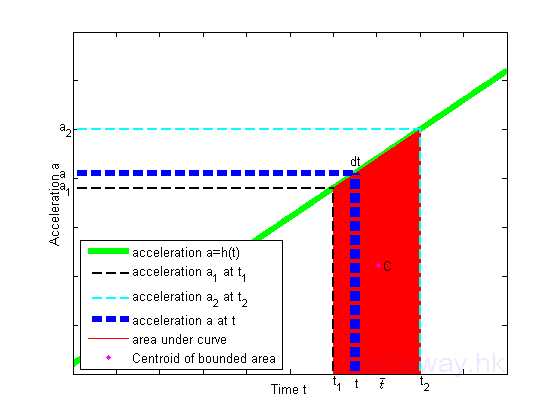
©sideway
ID: 140200017 Last Updated: 2/17/2014 Revision: 0 Ref:
References
- I.C. Jong; B.G. rogers, 1991, Engineering Mechanics: Statics and Dynamics
- F.P. Beer; E.R. Johnston,Jr.; E.R. Eisenberg, 2004, Vector Mechanics for Engineers: Statics
Latest Updated Links
- Travel Singapore Sight(last updated On 12/6/2025)
- Travel Singapore Rail Network(last updated On 12/5/2025)
- Travel Singapore Things to Know(last updated On 12/4/2025)
- Travel Singapore(last updated On 12/3/2025)
- Legrand Galion(last updated On 12/2/2025)
- Schneider Electric AvatarOn(last updated On 12/1/2025)
- Alfalux(last updated On 11/30/2025)
- Novabell(last updated On 11/29/2025)
- TownGas NJW12RM1(last updated On 11/28/2025)
- SamSung 42" OLED TV S90F 4K(last updated On 11/27/2025)
- Tefal KI7208 GLASS VISION KETTLE(last updated On 11/26/2025)

 Nu Html Checker
Nu Html Checker  53
53  na
na  na
na
Home 5
Business
Management
HBR 3
Information
Recreation
Hobbies 9
Culture
Chinese 1097
English 339
Travel 22
Reference 79
Hardware 54
Computer
Hardware 259
Software
Application 213
Digitization 37
Latex 52
Manim 205
KB 1
Numeric 19
Programming
Web 289
Unicode 504
HTML 66
CSS 65
SVG 46
ASP.NET 270
OS 431
DeskTop 7
Python 72
Knowledge
Mathematics
Formulas 8
Set 1
Logic 1
Algebra 84
Number Theory 206
Trigonometry 31
Geometry 34
Calculus 67
Engineering
Tables 8
Mechanical
Rigid Bodies
Statics 92
Dynamics 37
Fluid 5
Control
Acoustics 19
Natural Sciences
Matter 1
Electric 27
Biology 1
